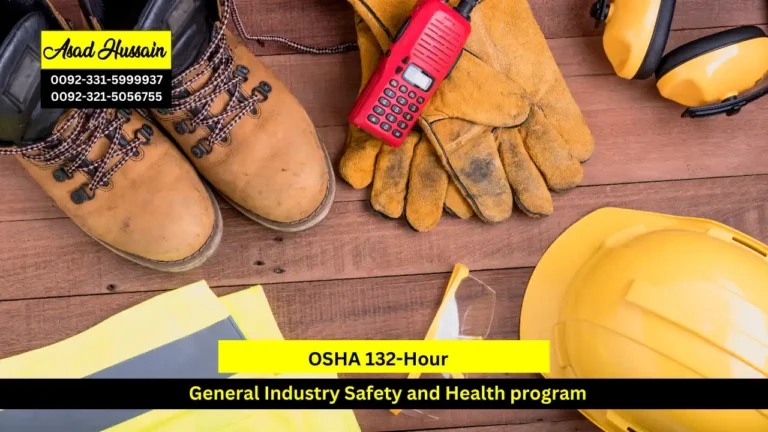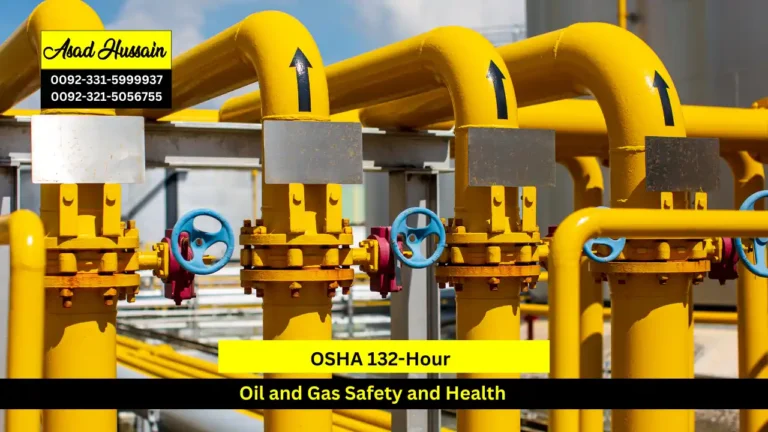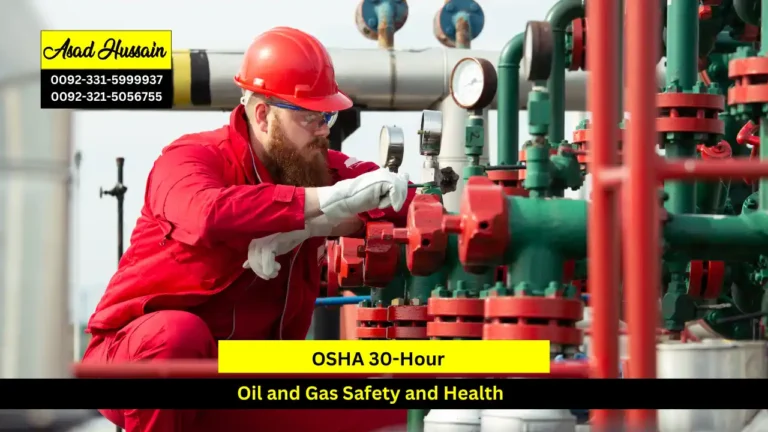In today’s rapidly evolving workplace, ensuring the safety and health of employees is more crucial than ever. The OSHA 30-Hour General Industry Safety and Health course is a key component in achieving this goal, designed to provide in-depth training for safety professionals and workers across various industries. This comprehensive program, offered by the Occupational Safety and Health Administration (OSHA), aims to enhance workplace safety through a structured educational approach
The OSHA 30-Hour General Industry Safety and Health course is an extensive training program that covers a broad range of safety and health topics relevant to general industry. It is designed for safety officers, managers, and employees with safety responsibilities, equipping them with the knowledge and skills necessary to ensure a safe and healthy work environment.
The course typically spans over 30 hours of instruction and is available in both in-person and online formats, making it accessible to a wide audience.
The OSHA 30-Hour General Industry Safety and Health course is a vital tool for improving safety standards across various industries. By providing comprehensive training on safety regulations, hazard identification, and risk management, this course helps create safer workplaces and promotes a culture of health and safety. For employers and employees committed to enhancing workplace safety, the OSHA 30-Hour course offers valuable knowledge and practical skills that can make a significant difference.
Whether you are a safety professional looking to expand your expertise or an organization aiming to bolster your safety programs, the OSHA 30-Hour General Industry Safety and Health course is an essential investment in your commitment to a safer and healthier work environment.
Program Highlights
Mandatory Units
- Introduction to OSHA
- Hazard Recognition and Risk Assessment
- Health Hazards in General Industry
- Emergency Preparedness and Response
- Safety Management Systems
- Electrical Safety
- Machine Guarding and Safety
- Fall Protection
- Material Handling and Ergonomics
- Hazard Communication
- Confined Space Entry
- Industrial Hygiene and Environmental Health
- Fire Protection and Prevention
- Workplace Violence and Security
- Legal and Ethical Consideration
Basic English Proficiency
Participants should have a basic understanding of English, as the course materials, instructions, and examinations are provided in English. This proficiency is crucial for comprehending the safety concepts and effectively participating in discussions and activities.
Minimum Age
The course is intended for individuals who are 18 years of age or older. This ensures that participants have the maturity and life experience needed to understand and apply the safety and health principles covered in the course.
Industry Experience (Recommended)
While there are no strict prerequisites in terms of prior experience, having some background or experience in the general industry is beneficial. Participants with prior knowledge or experience in workplace safety and health will find it easier to grasp the concepts and apply them to their specific work environments.
No Formal Educational Requirements
There are no formal educational requirements for enrolling in the OSHA 30-Hour course. It is designed to be accessible to individuals with varying educational backgrounds, including those without a formal degree.
Commitment to Completing the Course
Participants should be prepared to commit to approximately 30 hours of instruction, which may be spread over multiple days or weeks, depending on the format of the course. Active participation in all sessions and completion of any assignments or assessments are required to successfully complete the course.
Computer Access (For Online Courses)
If opting for an online format of the OSHA 30-Hour course, participants must have access to a computer with a stable internet connection. Basic computer skills are necessary to navigate the online learning platform and complete the course requirements.
No Specific Health Requirements
There are no specific health requirements for enrolling in the course. However, participants should be in good enough health to engage in the course activities and remain attentive throughout the training sessions.
Introduction to OSHA
- Understand OSHA’s role and its impact on workplace safety and health.
- Identify OSHA’s regulatory framework, including key standards and guidelines.
- Recognize the responsibilities of employers and employees under OSHA regulations.
- Explain the process for reporting violations and filing complaints with OSHA.
Hazard Recognition and Risk Assessment
- Develop skills to identify common workplace hazards and assess associated risks.
- Apply techniques for conducting effective hazard assessments.
- Use risk assessment tools to prioritize and address safety issues.
- Implement strategies to mitigate identified risks and prevent accidents.
Health Hazards in General Industry
- Identify various health hazards present in general industry settings, including chemical, biological, and physical hazards.
- Understand the principles of exposure limits and health effects related to these hazards.
- Apply methods for controlling and mitigating health hazards to protect workers’ health.
- Recognize the role of personal protective equipment (PPE) in managing health risks.
Emergency Preparedness and Response
- Develop and implement effective emergency preparedness plans for various scenarios.
- Understand the components of emergency response plans, including evacuation procedures and communication protocols.
- Train employees in emergency response procedures and ensure they know their roles during emergencies.
- Evaluate and improve emergency preparedness measures based on past incidents and drills.
Safety Management Systems
- Understand the key components of a safety management system (SMS) and its role in promoting workplace safety.
- Develop and implement a safety management plan tailored to specific organizational needs.
- Use safety management principles to foster a culture of safety within the workplace.
- Evaluate the effectiveness of safety management systems and make necessary adjustments.
Electrical Safety
- Identify common electrical hazards and understand the principles of electrical safety.
- Implement measures to prevent electrical accidents and injuries.
- Understand OSHA’s standards for electrical safety and how they apply to different workplace settings.
- Develop procedures for safe electrical work practices and maintenance.
Machine Guarding and Safety
- Recognize the importance of machine guarding and the types of guards required for various machinery.
- Identify common machine-related hazards and implement appropriate safety measures.
- Understand the principles of safeguarding machinery and ensuring proper guard installation.
- Conduct regular inspections and maintenance to ensure ongoing machine safety.
Fall Protection
- Understand the types of fall hazards and the importance of fall protection in general industry.
- Identify and implement appropriate fall protection systems and equipment.
- Develop and enforce fall protection plans and procedures.
- Train employees in the proper use of fall protection equipment and techniques.
Material Handling and Ergonomics
- Apply principles of ergonomics to reduce the risk of musculoskeletal disorders and improve workplace efficiency.
- Develop safe material handling practices to minimize injuries and accidents.
- Understand ergonomic assessment methods and implement solutions to address ergonomic issues.
- Evaluate and improve material handling processes based on ergonomic principles.
Hazard Communication
- Understand the OSHA Hazard Communication Standard and its requirements for labeling and safety data sheets (SDS).
- Develop and implement an effective hazard communication program within the workplace.
- Train employees on recognizing and handling hazardous materials and understanding labels and SDS.
- Ensure proper documentation and communication of hazard information.
Confined Space Entry
- Identify the characteristics and hazards associated with confined spaces.
- Develop and implement confined space entry procedures and safety plans.
- Understand the roles and responsibilities of entrants, attendants, and supervisors during confined space operations.
- Conduct effective training and drills to ensure safety during confined space entries.
Industrial Hygiene and Environmental Health
- Recognize industrial hygiene principles and their role in protecting worker health.
- Identify environmental health hazards and implement control measures.
- Conduct exposure assessments and use monitoring techniques to evaluate environmental conditions.
- Apply industrial hygiene practices to improve overall workplace health.
Fire Protection and Prevention
- Understand fire hazards and the principles of fire protection and prevention.
- Develop and implement fire safety plans, including emergency evacuation procedures and fire drills.
- Identify and use fire protection equipment, such as extinguishers and alarms, effectively.
- Evaluate fire safety measures and ensure compliance with fire safety regulations.
Workplace Violence and Security
- Recognize different types of workplace violence and their potential impact on employees and operations.
- Develop and implement workplace violence prevention and response plans.
- Understand security measures and strategies to address potential threats and enhance workplace security.
- Train employees on recognizing warning signs and responding appropriately to workplace violence incidents.
Legal and Ethical Considerations
- Understand the legal requirements and ethical responsibilities related to workplace safety and health.
- Identify and navigate legal obligations under OSHA regulations and other relevant laws.
- Develop and enforce policies that align with legal and ethical standards.
- Address ethical dilemmas and promote a culture of integrity and compliance in safety practices.
The OSHA 30-Hour General Industry Safety and Health course is designed for a diverse audience committed to enhancing workplace safety and health. It is ideal for safety professionals, including safety officers, managers, and supervisors, who are responsible for implementing and overseeing safety programs in their organizations. Additionally, the course is suitable for general industry workers who want to improve their understanding of safety protocols and contribute to a safer work environment. Employers seeking to provide their teams with comprehensive safety training will find this course beneficial for ensuring compliance with OSHA standards and fostering a culture of safety. Overall, the course caters to individuals at various levels within an organization who are dedicated to advancing their knowledge and skills in workplace safety and health.







